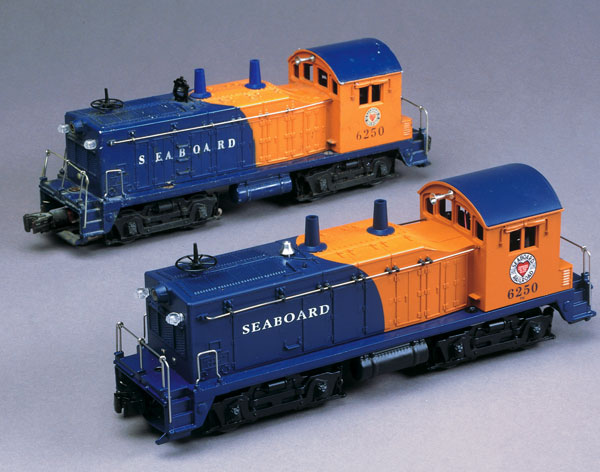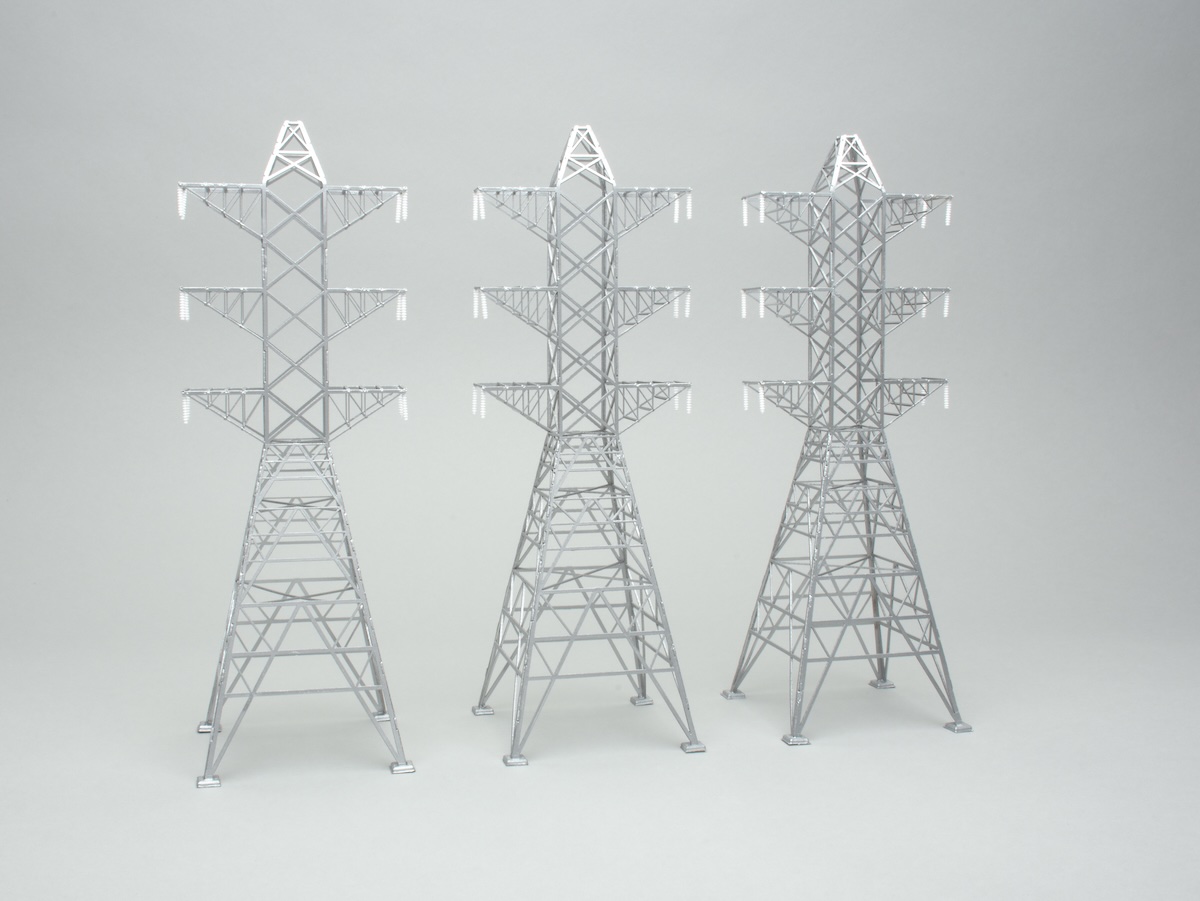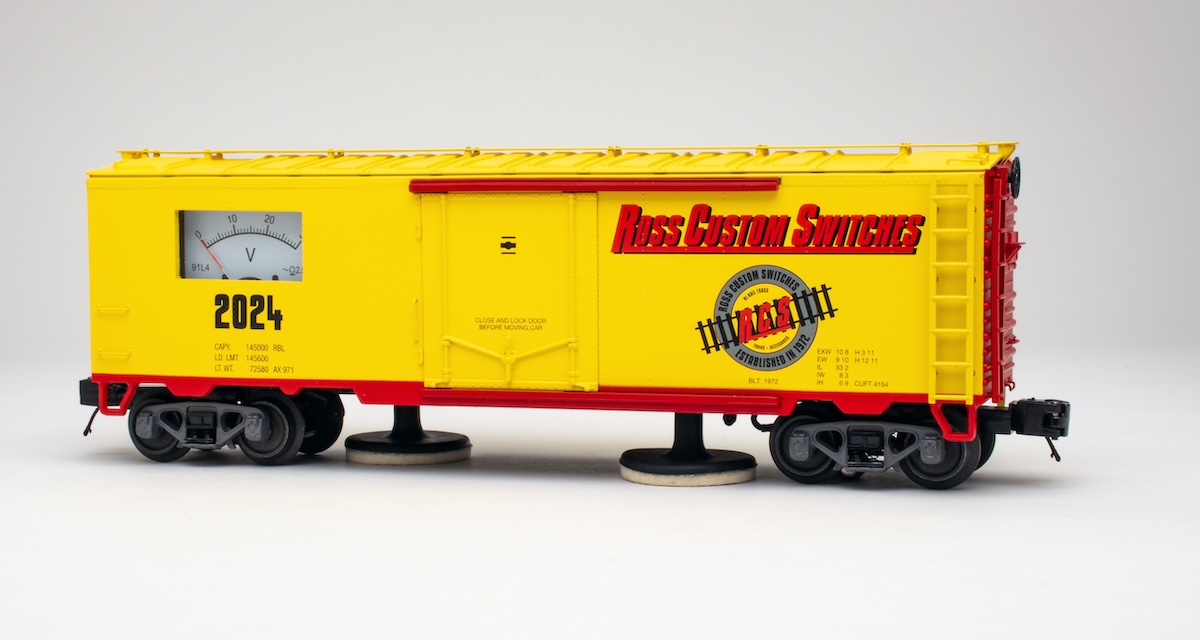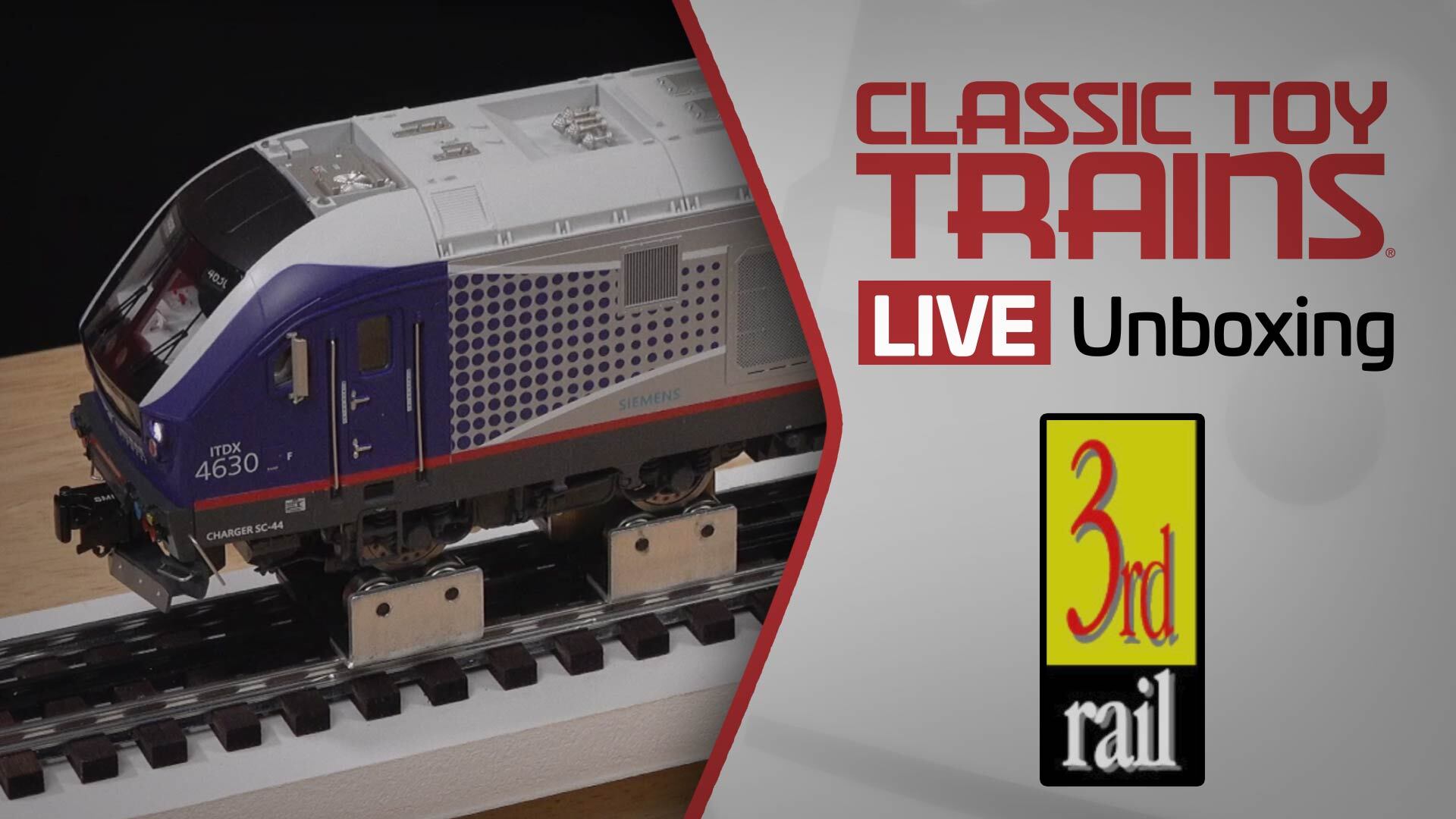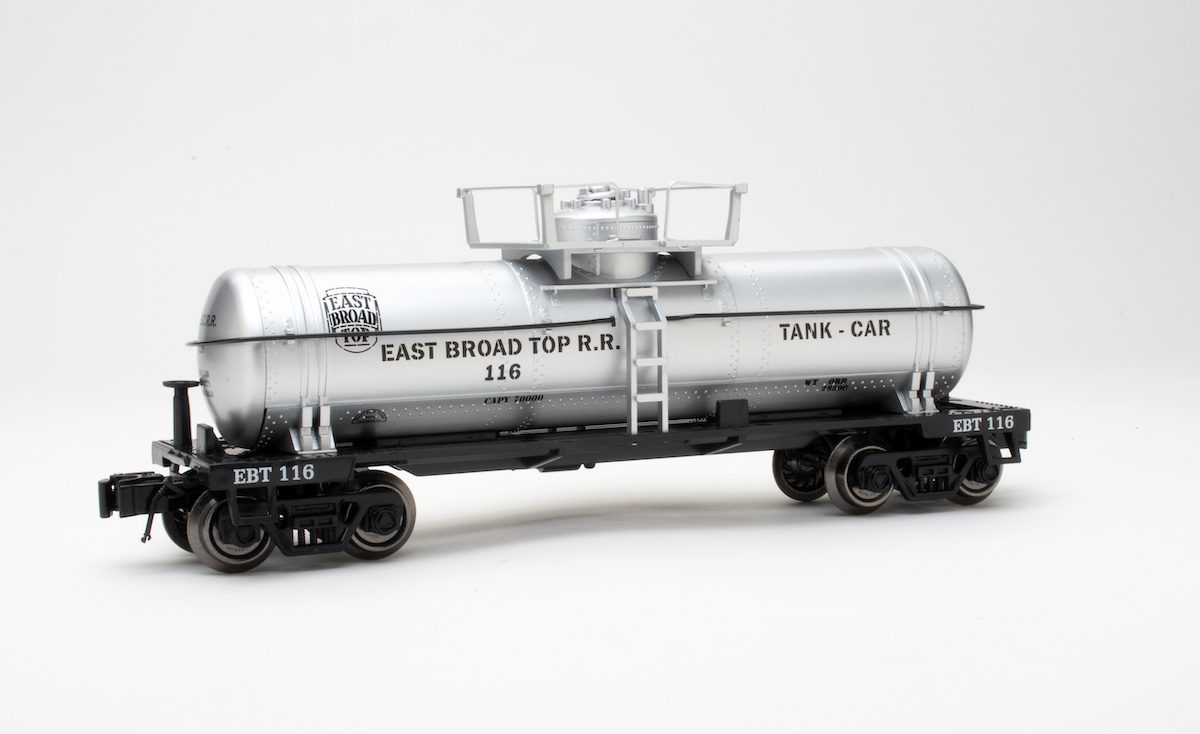The postwar celebration series products we’ve seen are not exact copies of the originals. For example, the road numbers have the letters PW (for postwar) nearby, so that, one supposes, the shells can’t be re-used by sharpies desiring to sell a postwar frame with a modern “mint” shell.
These re-creations also have a Postwar Celebration series medallion placed somewhere on the engine. In the case of the no. 57 AEC switcher, the medallion is smack-dab in the middle of a radiator, for all to see. In the case of the no. 6250, it is placed a bit more discreetly, attached to the underside of the frame.
The no. 6250 is a personal favorite, having received one as a gift more than 40 years ago. It was always my “big engine” and carries quite a bit of childhood baggage, so when someone tampers with this childhood icon, they’d better get it right. From first glance, Lionel has.
What makes this locomotive so special? Two things: First, the engine is made the “old” way, with a die-cast frame and a “real” plastic shell versus the bargain-basement sheet-metal frame and “cheap-looking” plastic shell on the can-motor versions of recent years.
Second, Lionel stuffs a top notch motor and every piece of technology at its disposal into the framework.
What a body!
Lionel’s NW2 is itself a fairly good copy of a prototype EMD switcher. Measured coupler-to-coupler, the engine is 11 inches long or approximately 44 scale feet (the prototype is 441/2 feet long) long. It is 4 inches tall, or 16 O scale feet, versus 141/2 feet on the prototype. The level of detail that the original Lionel Corp. committed to this engine is commendable.
As for the Seaboard paint scheme, well, an examination of books and photos in the Kalmbach library failed to turn up photos of any Seaboard switchers done up in quite this electric a color scheme (though the paint job on the postwar nos. 601/602 was much closer to target). Still, this is an attractive color combination.
The new 6250 is close to a perfect match with the original model from 1954, but a second look will reveal some minor changes that make this a distinctive version all its own.
Like the original, this switcher is a top-of-the-line model. The shell is as nice as they come. It is exceptionally crisp and clean. We did note a few subtle changes in the tooling toward the front of the nose. At some point in the past several of the individual hatches were removed, creating larger but less textured doors. Two of three cast-in steps were also eliminated, to create a better surface for lettering.
When doing a side-by-side comparison with my own postwar switcher, the detail items on my original model, such as bolts and hinges along the topside, were less crisp and clean than on the new version. Of course, the difference in how the bodies were decorated at the factory and the amount of paint applied to the model must be taken into account. Still, the new shell provides a lot of texture that you can see and feel with your finger tip!
The wire hand rails and grab irons are terrific on the latest version and the circular radio antenna serves as a Railsounds volume control — now that is creative! The only radical departures from the original shell style are the slots by the cab for switches controlling Railsounds selection (full or SignalSounds), and setting the Command control state (run or program).
Once I got over the “shock” of this change it dawned on me that this was a common-sense alteration, since it made turning the engine over to change control positions unnecessary.
There is a minor, but very visual variation from the original; a plastic bell. Lionel substitutes a small silver-colored bell for the larger “steam-style” bell of the postwar version.
The die-cast frame appears to be flawless. The metal truck side frames are smooth and crisp.
There is a slight difference between the ends of the frames on the two engines. On the original version there is a straight bar beneath the coupler. On the modern version the bar is set back slightly and gently arcs. The couplers on the modern model don’t extend out quite as far as the original model.
The modern version’s decoration is immaculate, far better than the original. The bright tangerine and blue scheme is skillfully applied and universally clean. Admittedly, this makes the original look like something done at home with a clogged spray can nozzle.
The new model’s SEABOARD lettering surpasses the rubber-stamping on my original model. The lettering is bright and crisp and the only quirk is where the letters O and A of BOARD collide with physical details on the shell, giving the illusion that a few of the letters are askew.
The cab-side herald differs from the water decal on the original. The new Seaboard Air Line logo is a wee bit larger, but it is crisp, clean, and easy to read. The no. 6250 is stamped below the herald and the letters PW are centered and placed below the road number.
All in all, from the outside, I rate this engine as capturing the spirit of the original while making improvements along the way.
Sounds abound
The Railsounds system is the crown jewel for this locomotive. Even if you don’t operate the TrainMaster command-control system, you can enjoy lush, prototypical sounds that make operation of the no. 6250 special.
The unit has a bell that requires a Lionel Sound Activation Button (or similar after-market product) if your transformer does not have this function. The horn is very nice and uses Railsounds’ MultiHorn function, allowing you a different horn sound with each blast.
You will, of course, need to operate this engine with Lionel’s TrainMaster system to access all of its features, such as electrocouplers, a real plus for a switching locomotive.
But what about performance? The new version’s average low speed was 25.9 scale mph and its high speed was 159.6 scale mph. We noted that, on occasion, a string of cars would derail when nudged through a switch by the 6250. We surmised that this was caused by a combination of very light rolling stock and something akin to jack-rabbit starts. Heavier cars should fare better.
Drawbar pull was about what we expected, .85 lbs. A little anemic if you planned on pulling long freights, but about right for a switcher.
We noted two quirks during testing. First, having pickup rollers only on one set of trucks, there was a bit of lurching through sections of Atlas O track where electrical connectivity wasn’t perfect. Rollers on both trucks would have been handy and minimized balking.
Second, there was an audible clicking noise caused by an attachment to an axle that tracks rpms for the sound system. Not a show stopper, but noticeable.
The great thing about buying new equipment is that, well, it’s new. If you missed the no. 6250 the first time around, here is a model that replicates the quality and design of the original 1950s model, yet it comes equipped with the latest gadgets for high-tech railroading.





